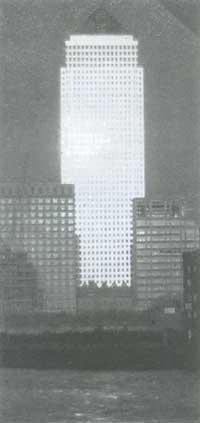A tower in London is a source of problems
London's Canary Wharf Tower is an obstacle to television signals for the 100,000 Londoners living in East London. The tower ended in 1990 and since then television signals are reflected in its walls. Recently, in a report by BBC engineers, it has been said that “there is no solution to this problem”.

The only thing the BBC advises is to consider what happened to Canary Wharf when granting building licenses in future constructions. In this sense, the BBC has asked the Radiocommunication Agency of the Ministry of Industry to control in some way the high constructions to be made in the future.
The Canary Wharf tower is 242 m tall and the length of each side is 50 m. Smooth walls, stainless steel plates and metallic windows. Thus, television signals broadcast from South London are perfectly reflected on the south and west walls of the tower. Therefore, the signal received in the surrounding antennas is double, on the one hand the one emitted from the station and on the other the one reflected in the walls of the tower.
Or
Powdery building materials, such as bricks, only reflect 5% of the energy of television signals. On the contrary, Canary Wharf reflects 80% and, consequently, two images of the same intensity are seen on television.
Although the blame is not on the BBC, BBC engineers are investigating the problem. According to the studies carried out, the tower has been clearly guilty of the problem.
When proposing solutions it has been proposed to cover the entire tower with ferrite, since the signs reflected in this way would go to the sky, but the cost of this work is enormous, so until now nothing has been done. Therefore, in this case we do not know what kind of solution will be found, but at least it is worth learning something for the future, reader.





